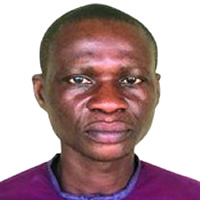Population size and Distribution
In 2010 PHC, Sefwi-Akontombra district recorded a total population of 82,467 comprising 43,603 (52.9%) males and 38,864 (47.1%) females. The population is predominantly rural with urban population accounting for 8.8 percent and rural population representing 91.2 percent.
Table 2.1 shows the population size and composition in Sefwi Akontombra district. The district has a relatively young population with about 42.5 percent of the population below 15 years. The aged, that is those 60 years and older, constitute only 4.1 percent of the population. A similar pattern is observed among the male and female and urban and rural populations.
Age and sex structure
Understanding the age and sex structure of the population of the district is important for planning and equitable allocation of resources. The age and sex structure of the population of the district follow the region and the national pattern (Table 2.1). The age structure is that of a broad base and reduces gradually in the subsequent age groups and narrows in the older ages. Whiles more males than females are observed in all the age groups (0-14 years, 15-64 years and 65+ years).
The 0-4 year age group has the highest proportion of 15.8 percent, followed by the 5-9 year age group (14.2%) and the 10-14 year age group (12.5%). The 80-84 year age group has the least proportion of 0.3 percent. This pattern is the same for both males and females
Sex Ratio
It is known that there are more males than females at birth, but there are more male deaths at all ages. The sex ratio should therefore show a gradual decrease with age such that there is near parity (the number of children previously born alive to a woman) in the reproductive age group 15-49. (GSS, 2005). As indicated in Table 2.1 the sex ratio for the district is 112 males per 100 females. Except in a few age groups, the ratio indicates more males than females in the district. Age misreporting and age heaping are however more likely to be accounting for the sex ratio of 205.6 in the age group 55-59.
Age Dependency Ratio
The age-dependency ratio is the ratio of persons in the “dependent” ages (generally under age 15 and over age 64) to those in the “economically productive” ages (15-64 years) in a population. Where more detailed data are lacking, the age-dependency ratio is often used as an indicator of economic burden the productive portion of a population must carry-even though some persons defined as “dependent” are producers and some persons in the “productive” ages are economically dependent. (PRB, 2004).
A high dependency ratio indicates that the economically active population and the overall economy face a greater burden to support and provide social services needed by children and older persons who are often economically dependent. Table 2.1 also shows that the age dependency ratio for Sefwi Akontombra District (SAD) is 82.8 in 2010. This implies that every 100 persons in the working age group have 83 persons in the dependent ages to support and it is higher than the regional dependency ratio of 74.8.
Population Pyramid
A population pyramid illustrates the age and sex structure of a country's population and may provide insights about political and social stability, as well as economic development. The shape of the population pyramid gradually evolves over time as a result of fertility, mortality, and international migration trends.
Figure 2.1 is a graphical representation of the population by age and sex of Sefwi Akontombra District. The age pattern of the pyramid is typical of most developing countries’ population age structure. The shape of the population pyramid is generally a bell-shape with a broad base representing a large proportion of children (less than 15 years), which tapers off with increasing age of a small proportion of the elderly (60 years and older). There are however exceptions in ages 0-15, 30-59 which have relatively larger male populations than females.
Migration, Fertility and Mortality
Fertility
Fertility refers to the number of live births women have. It differs from fecundity, which refers to the physiological capability of women to reproduce. Fertility is directly determined by a number of factors that, in turn, are affected by a great many social, cultural, economic, health, and other environmental factors (PRB, 2004). Crude birth rate indicates the number of live births per 1,000 population in a given year. General Fertility Rate is the number of live births per 1,000 women ages 15-49 in a given year.
Total Fertility Rate (TFR) is the average number of children that would be born to a woman by the time she ended childbearing if she was to pass through all her child bearing years conforming to the age-specific fertility rates of a given year.
Table 2.2 shows the reported total fertility rates, general fertility rates and the crude birth rates for the Western region and Sefwi Akontombra district. The Total Fertility Rate in 2010 for Sefwi Akontombra is 3.6. General fertility rate of women aged 15-49 is 113 live births per 1,000 women, which is slightly higher than the regional rate of 89.2 births per 1,000 women ages 15-49. The crude birth rate in the Sefwi Akontombra district was 26 live births per 1,000 population.
Table 2.3 shows female population 12 years and older, with children ever born) and children surviving by sex. Overall, the district has a total of 24,751 females aged 12 years and older with 65,157 CEB out of which 58,086 representing 89.1 percent of the children survived. Age group 35-39 years has the highest proportion of children ever born (10,455) out of which 9,716 representing 92.9 percent children survived. Of the 3,456 women in age group 25-29 years, the total number of children ever born is 7,598 and 7,124 representing 93.8 percent of the children survived. Thus the highest proportion of children who survived belongs to women in age group 25-29 years. The age group 15-19 has the least number of children ever born (443) to women in the reproductive age group (15-49 years) and the lowest proportion of children surviving (87.4%).
Mortality
Mortality refers to deaths that occur within a population. The probability of dying during a given time period is linked to many factors, such as age, sex, race, occupation and social class. Mortality also plays an important role in determining the growth of a population. The level and pattern of mortality is a reflection of the health status of a population. Results from mortality analyses underpin disease control programmes and contributes to identifying viable and relevant health and related programmes which advance human survival.
Crude death Rate
Crude death rate is affected by many population characteristics, particularly age structure and is defined as the number of deaths per 1,000 population in a given year. Table 2.4 shows deaths in households and crude death rate for the district during the 12 months preceding the census. It further shows that a total of 316 deaths were recorded in the Sefwi Akontombra District at the 2010 PHC with a crude death rate of about 3.8 or 4 deaths per 1,000 population.
Causes of death
Table 2.5 presents the cause of death by district in the Western Region. Out of a total of 316 deaths recorded in the Sefwi Akontombra District, 13.3 percent are due to accident or violence or homicide or suicide whiles 86.7 percent are due to all other causes such as natural deaths. The district’s percentage of deaths caused by either accident or violence or homicide or suicide is lower than the regional average of 13.4 percent.
Age Specific Death Rate
Age specific death rate is the number of deaths of people in a specified age group per 1,000 population of that age group. Since mortality varies greatly by sex and race, age-specific death rates are often given separately for males and females in a population. The graph shows the expected “U” pattern. The male under five age specific mortality rate was higher than the female in the same age group. The lowest age specific mortality rates occurred in the 10-14 year age group. The age specific mortality rates between 20-34 year age groups was higher for females than for males probably due to maternal deaths.
Migration
Migration is the movement of people across a specific boundary for the purpose of establishing a new permanent or semi-permanent residence. Table 2.4 shows the birthplace by duration of residence of migrants. It also indicates that a total of 37,683 migrants are resident in Sefwi Akontombra District (SAD). About 18.1 percent of the migrants in the district were born elsewhere in the region, 80.5 percent were born elsewhere in another region and 1.4 were born outside Ghana. Of the migrants born elsewhere in another region, 22.3 percent are from Ashanti, 15.8 percent are from Upper East and Brong Ahafo (14.4%).
The highest percentage of the migrants are those have resided in the district between 1-4 years (26.9%), followed by those resident between 10-19 years (22.5 percent) and more than twenty (20+) years (20.9 percent).
Table 2.6 further portrays an interesting migratory pattern regarding most recent migration or migrants who have resided in the district for 1- 4 years. Large proportions of migrants come from the three northern regions, Northern (29.5%), Upper East (31.1%), and Upper West (34.3%).
Date Created : 11/20/2017 3:57:15 PM





